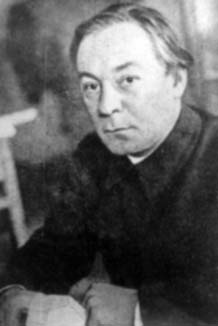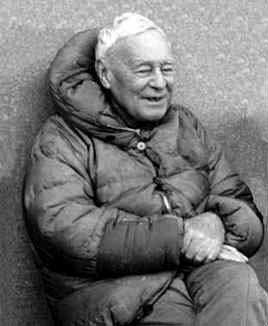

Boris Delone graduated from Kiev University in 1913. At Kiev he was a student of Grave and he followed Grave's work in algebra and number theory. After graduating Delone taught in Kiev where he was a member of the Mathematical Society which had among its members Ch. T. Bialobzeski, P. V. Voronets, N. B. Delone, D. A. Grave, A A Friedmann, A P Kotelnikov, V P Linnik (Yu. V. Linnik's father) and O. Yu. Schmidt.
Following the Revolution of 1917 there was a change in policy towards education which, certainly in the Ukraine, had to become more technology based and more practical. Algebra certainly did not fit into this new educational philosophy and Grave's algebra seminar was forced to close. Some mathematicians, such as Grave himself, changed to study applied mathematical topics. Delone, however, chose to continue to study algebra and so was forced, in the 1920s, to leave the Ukraine.
Delone moved to Petrograd in 1922. Petrograd was the name that St Petersburg had been given in 1914 and, two years after Delone began working there, in 1924, it was again renamed, this time to Leningrad. Delone worked at Leningrad University from 1922 until 1935.
The Institute of Physics and Mathematics had been established by Steklov in Petrograd (as it was called at the time) in 1921. In 1932 the Institute of Physics and Mathematics was divided into two independent Departments, the Mathematics Department headed by Vinogradov and the Physics Department headed by Vavilov. Vinogradov invited some outstanding mathematicians to join the new Mathematics Department including Delone.
In this new Mathematics Department, Delone became a colleague of Sergei Bernstein, Luzin, Smirnov, Kuzmin, N S Koshlyakov, Kochin, Sobolev and Faddeev.
 The
St Petersburg Mathematical Society was founded in 1890 but disbanded at
the time of the 1917 Revolution. However the Society was reformed in 1921
as the Petrograd Physical and Mathematical Society and Delone joined in
the following year. He played an active role in the Society along with
other outstanding mathematicians such as Ya. V. Uspenskii, V. I. Smirnov,
V. A. Steklov, A. A. Friedmann,
V.
A. Fock, A. S. Besicovitch, Sergei
Bernstein, Ya. D. Tamarkin, R. O. Kuzmin and B. G. Galerkin.
The
St Petersburg Mathematical Society was founded in 1890 but disbanded at
the time of the 1917 Revolution. However the Society was reformed in 1921
as the Petrograd Physical and Mathematical Society and Delone joined in
the following year. He played an active role in the Society along with
other outstanding mathematicians such as Ya. V. Uspenskii, V. I. Smirnov,
V. A. Steklov, A. A. Friedmann,
V.
A. Fock, A. S. Besicovitch, Sergei
Bernstein, Ya. D. Tamarkin, R. O. Kuzmin and B. G. Galerkin.
In 1934 the Division of Mathematical and Natural Sciences of the Academy of Sciences of the USSR decided to split the Departments of the Steklov Institute of Physics and Mathematics into independent Institutes, the Steklov Mathematical Institute and the Lebedev Physical Institute. Delone became the Head of the Algebra Department of the Steklov Mathematical Institute. However, the Steklov Mathematical Institute moved to Moscow and, in 1935 Delone moved to Moscow.
Delone was professor of mathematics at the University of Moscow from 1935 to 1942.
The mathematical topics that Delone studied include algebra, the geometry of numbers. He also did important work on the structural analysis of crystals.
In addition to his fame as a mathematician, Delone was a famous rock climber.
Article by: J.J. O'Connor and E.F. Robertson
Source: MacTutor History of Mathematics archive